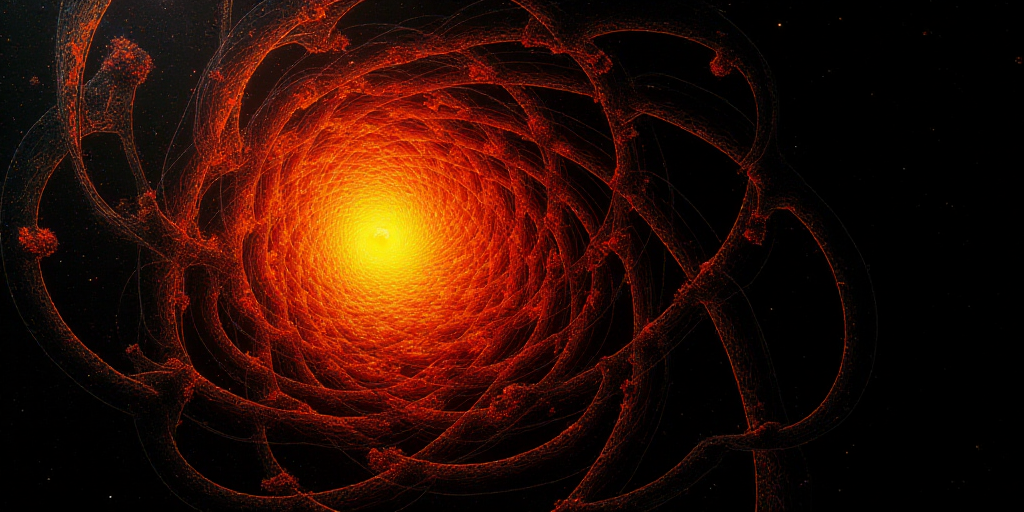Understanding the Types of Matter in the Cosmos
The universe comprises two types of matter: dark matter, an invisible substance known only by its gravitational effects on a large scale, and ordinary matter, which includes gas, dust, stars, planets, and earthly objects like cookie masses and canoes.
Scientists estimate that ordinary matter makes up only about 15% of the total matter in the universe. For a long time, researchers have been trying to document where this ordinary matter is located since nearly half of it remains unaccounted for. With the help of powerful radio bursts (FRBs) from 69 cosmic points, investigators have found the “missing” matter.
The Hidden Ordinary Matter
This missing matter was primarily hidden as low-density gas spread across the vast spaces between galaxies. It was detected due to the effect this matter has on radio waves traveling through space, according to researchers. This thin gas constitutes the intergalactic medium, a kind of cosmic haze between galaxies.
Previously, scientists determined the total amount of ordinary matter through a calculation that considered the observed light leftover from the Big Bang, an event about 13.8 billion years ago that initiated the universe. However, they couldn’t locate even half of this matter.
“So the question we’ve been grappling with is: Where is it hiding? The answer seems to be: in a diffuse and faint cosmic web, far from galaxies,” says Liam Connor, a Harvard University astronomy professor and lead author of the study published Monday in Nature Astronomy.
Distribution of Ordinary Matter
Researchers discovered that a smaller portion of the missing matter resides in the diffuse material halos surrounding galaxies, including our Milky Way.
Ordinary matter consists of baryons, subatomic particles—protons and neutrons—necessary to build atoms. “People, planets, and stars are made of baryons. Dark matter, on the other hand, is a mysterious substance making up most of the universe’s matter. We don’t know what new particle or substance constitutes dark matter. We know exactly what ordinary matter is, just not where it was,” Connor explains.
So how did so much ordinary matter end up in the middle of nowhere? Massive amounts of gas are expelled from galaxies when massive stars explode in supernovae or when supermassive black holes at galaxies’ centers “burp,” ejecting material after consuming stars or gas.
“If the universe were a more boring place, or if the laws of physics were different, we might find all the ordinary matter falling into galaxies, cooling, forming stars, until every proton and neutron belonged to a star. But that’s not what happens,” Connor says.
Thus, these violent physical processes displace ordinary matter across immense distances and send it into the cosmic desert. This gas isn’t in its usual state but as plasma, with its electrons and protons separated.
Detecting the Missing Matter
The mechanism used to detect and measure the missing ordinary matter involved phenomena called fast radio bursts (FRBs), powerful pulses of radio waves emanating from distant points in the universe.
Though their exact cause remains a mystery, one leading hypothesis is that they’re produced by highly magnetized neutron stars—stellar remnants left after a massive star’s death in a supernova explosion.
As radio wave light travels from the FRB source to Earth, it gets dispersed across different wavelengths, similar to how a prism turns sunlight into a rainbow. The degree of this dispersion depends on the amount of matter encountered along the light’s path, providing a mechanism to locate and measure matter that wouldn’t otherwise be found.
After accounting for all the ordinary matter, researchers determined its distribution. Around 76% resides in intergalactic space, about 15% in galaxy halos, and the remaining 9% is concentrated within galaxies, mainly as stars or gas.
Key Questions and Answers
- What is the missing matter? It’s ordinary matter that was previously unaccounted for, primarily hidden as low-density gas between galaxies.
- What caused the dispersal of this matter? Violent physical processes, such as supernovae and supermassive black hole “burps,” displaced the matter across immense distances.
- How was this missing matter detected? Researchers used fast radio bursts (FRBs) to detect and measure the dispersed matter, relying on how radio waves’ dispersion indicates the presence of matter along their path.
- What’s next for researchers? They aim to explore more significant mysteries related to ordinary matter in the universe and, ultimately, uncover the nature of dark matter and why it’s so challenging to measure directly.






